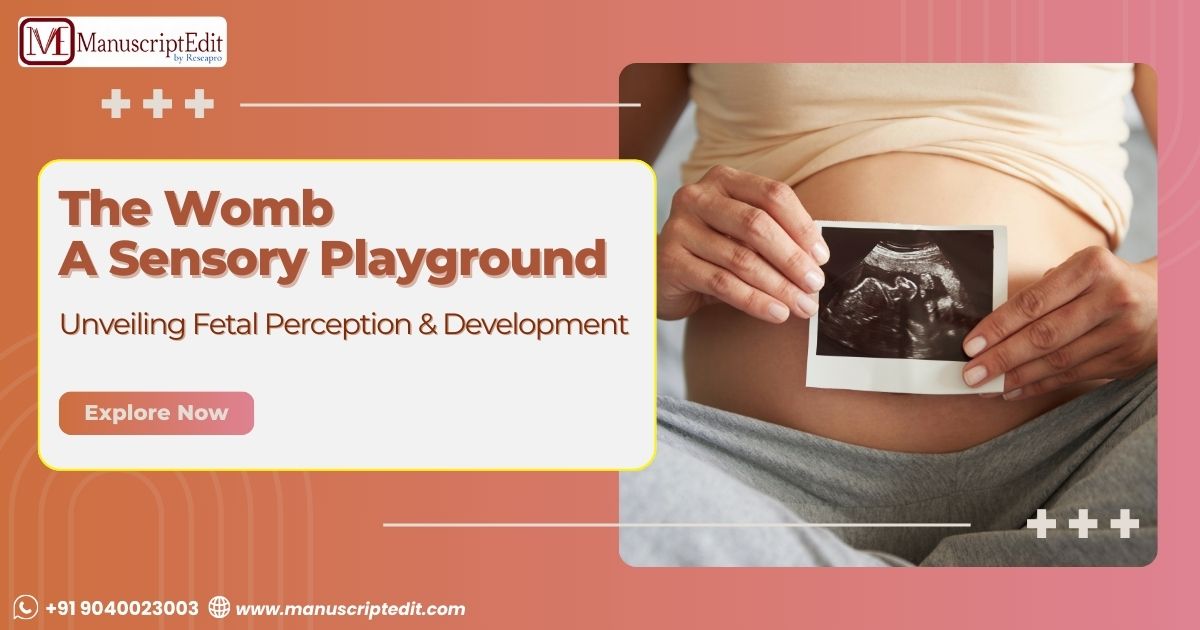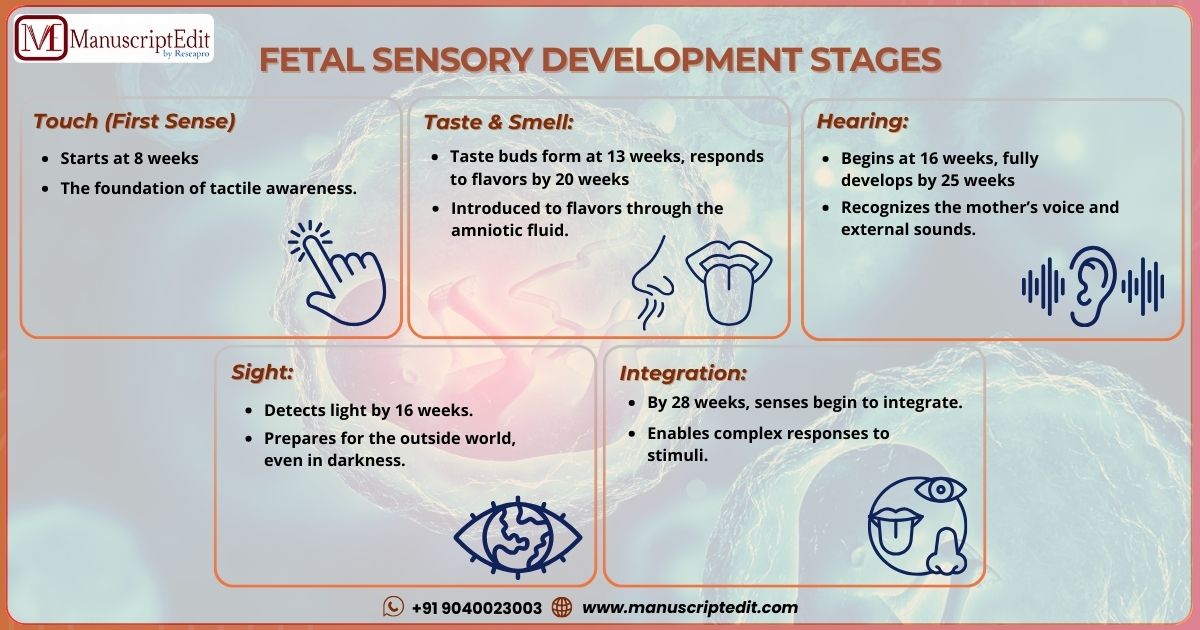
The human experience of the world is primarily shaped by our senses. We rely on sight, touch, hearing, taste, and smell to navigate our lives and understand our environment. But did you know that our senses begin to develop long before birth? Yes, that’s right—our sensory foundations are laid down while still floating around in amniotic fluid. It is as if our fetal selves are preparing to enter the world, feeling their way in the dark, and learning to reach out to the universe. In this blog post, we’ll deeply dive into how the senses develop in the womb, explore when fetuses start perceiving stimuli, and examine the most recent findings in fetal sensory development. So, grab your metaphorical lab coat (or just your cup of coffee) and venture into the fascinating world of prenatal sensory perception.
The Early Days: A Warm Welcome to the Womb
Let’s begin at the beginning. Following fertilization, an embryo undergoes a stunning series of transformations, eventually developing into a fetus with a beating heart, limbs, and organs. However, it is not merely a matter of physical development. Sensory organs and the nervous system start to form. By about eight weeks after conception, the building blocks of sensory perception have begun to emerge.
And then, for those of us who are researchers or scholars, you know there is always a race between development and functionality. Early on, the fetus doesn’t just develop organs; it gets a sense of touch, sound, and even the faintest flicker of light. It’s like setting up a complex, finely tuned system in advance, just waiting to be put into action once the fetus is ready to “engage” with the world.
1. Touch: The First Sense to Arrive
Touch, the oldest and most basic sense, emerges in the developing fetus as early as 8 weeks gestation. At this stage, the fetus’s skin, still covered by a layer of cells, becomes sensitive to the outside world. But it’s not just about the skin; the underlying sensory system also comes into play. By 12 weeks of gestation, the fetus has developed a complex array of receptors to feel touch and pressure. These early sensory experiences are crucial for the fetus to ‘map’ its own body, like an artist outlining a figure before adding detail. One of the most remarkable signs of this early sense of touch is the reflexive reactivity of the fetus. A light touch on the womb may elicit a tiny movement, the fetus’s response to external stimuli. At this stage, it’s not a powerful kick, but a gentle wiggle, as if the fetus is getting used to this world that is just like a cozily fluid-filled space.
2. Hearing: A Symphony Underwater
Now, about hearing. A fetus isn’t going to hear a Beethoven symphony in all its glory, but the auditory system starts developing very early with some pretty fascinating implications. The fetal inner ear functions at 16 weeks, and by 25 weeks, fetuses can perceive sounds from the outside world. But let’s not kid ourselves and pretend they are listening to the latest Taylor Swift album yet. Instead, they are hearing a garbled, low-frequency version of what’s happening in the mother’s body—the heartbeat, blood flow, and, if the mom’s talking or listening to her favourite tunes, those vibrations too. But here’s the cool part: new science suggests that a fetus can even distinguish their mother’s voice.
A 2023 study in the Journal of Neuroscience revealed that fetuses respond more vividly to the pitch and rhythm of their mother’s voice than to any other external sounds. This finding suggests that while the fetus is swimming around in the warm, bubbly ocean of the womb, it is already developing an affinity for the mom’s voice. Who knew fetal sound recognition could be a pre-birth bonding experience? This discovery brings a new level of connection to the prenatal experience, making it even more fascinating.
3. Sight: Let There Be Light!
You might be thinking, “How can sight develop in an environment so dark? ” It’s a valid question—after all, the fetus doesn’t exactly have access to a full range of colours or even the occasional “sunlight bath.” However, light does play a role, even within the womb. By 16 weeks, the fetus’s eyes fully form and can detect light and dark contrasts. It’s like having the most basic version of the “light sensor” app installed in your eye, and yes, it works even if you’re not opening your eyes to the bright outdoors yet.
Interestingly, researchers found that fetuses can respond to the filter of the light coming through the uterine wall, more so when it comes from external sources, such as light in a flashlight held against the abdomen. At 26 weeks, the fetus is already exhibiting specific behaviours in response to changes in light intensity, like eye movement and variation in heart rate. But before you go wild and start picturing an all-out disco party in the uterus, remember that the fetus doesn’t see clearly—it’s more about detecting the presence or absence of light.
4. Taste and Smell: The “Flavor” Experience
Taste and smell do not get as much attention in fetal development studies, but they are essential senses that develop as the fetus matures. Around 13 weeks in, the taste buds start forming, and by 20 weeks, the fetus can probably taste the amniotic fluid. Studies suggest that the flavors of the foods the mother consumes can affect the composition of the amniotic fluid, thus giving the fetus a kind of flavour profile of its future world.
Monell Chemical Senses Center research reveals that even fetuses may respond to chemical flavours. For example, when the mother eats sweet or bitter foods, the fetus can exhibit movements such as swallowing or facial grimacing. Imagine that—getting your first taste of flavours without even having teeth. It’s the first course in a lifetime of culinary experiences!
However, as far as smell is concerned, which isn’t easy to test in utero, some studies suggest the olfactory system of the fetus kicks in around week 25. Meanwhile, a newborn, by the time of birth, could recognize her mother’s skin in the scent. It makes sense since they will get a whiff of it in the womb through amniotic fluid. Now, that is some sense of smell that can make perfume makers, even the most advanced perfumers, a little green with envy.
5. Integration and Perception: The Great Leap Forward
Around this time, the third trimester (about 28 weeks), all of the fetus’s senses- touch, hearing, seeing, tasting, and smelling—are working at a rudimentary level, and its ability to integrate that sensory input begins to mushroom. The fetus can now respond to more complex stimuli: moving toward sounds, reacting to changes in light, and even showing preferences for different tastes or smells. A study from 2022 found that fetuses exhibit a preference for their mother’s voice over other voices, highlighting the growing complexity of sensory integration.
At this stage, researchers are more interested in how the fetus interacts with its world—it moves, turns, and even shows behaviours founded on sensory perceptions. It’s as if the fetus is starting to “process” its “world” while even making early sense of memory. A 2023 study from Developmental Science finds that fetal movements might be steered not only by reflexes but also by the fetus’s maturing ability to anticipate stimuli. That’s a brain precursor to more sophisticated cognitive functions that will come online once born.

Conclusion: A Small, Sensory Wonder
So, for researchers interested in prenatal development, it’s clear that fetal sensory experiences are far more prosperous and more complex than we once thought. Touch, hearing, sight, taste, and smell do not each emerge in relative isolation; instead, they are part of a vast interconnected system through which the fetus can begin to engage with the world in its terms. It’s like a “pre-birth rehearsal” for the sensory journey that awaits when the baby enters the world.
In understanding how these senses develop in the womb, we can also learn much more about how early sensory experiences affect development in general. In other words, it is like uncovering the hidden layers of an incredibly intricate puzzle. And perhaps, only perhaps, does it remind us of the incredible adaptability and resilience of human beings—starting as a tiny, wiggling, undifferentiated cluster of cells and gradually turning into creatures that can see, hear, taste, touch, and smell the world in all its complexity.
Prenatal sensory development is more than just a series of thrilling biological phenomena—it’s proof that the human body can sense and interact with its surroundings even before birth. It’s sensory development at its best: a slow, step-by-step, and ever-changing process still astounding many, whether researchers or not.



